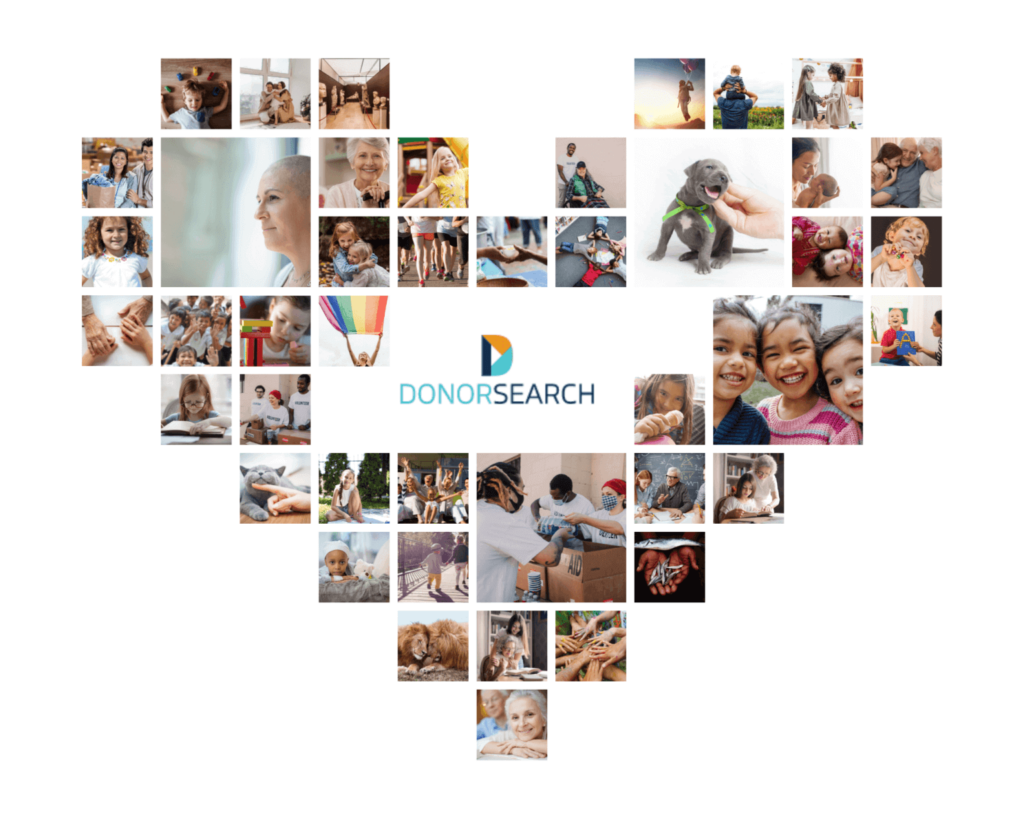As a nonprofit professional, fundraising is always on your mind. After all, fundraising dollars power the day-to-day services you provide to your beneficiaries and help keep your lights on.
But what about large-scale projects, like building or renovating a facility, that require an influx of money?
That’s where capital campaigns come in.
What is a capital campaign?
A capital campaign is a targeted fundraising effort that takes place over a defined period of time.
Capital campaigns are all-hands-on-deck projects, requiring ample planning and consideration. They also demand your team to dedicate themselves to working toward a clearly-defined goal for months (or even years).
If you’re considering launching a capital campaign (especially for the first time), you likely have many questions about the process. To help, we’ve created this guide that will cover all the basics you need to know to successfully begin planning your own capital campaign.

Do you need donor research support for a capital campaign?
Reasons Nonprofits Run Capital Campaigns
Capital campaigns aren’t run-of-the-mill fundraising campaigns. In fact, nonprofits don’t run capital campaigns unless they have a significant need that requires a significant amount of financial backing.
Let’s look at the three reasons a nonprofit might need to conduct a capital campaign:
Frequently Asked Questions About Capital Campaigns
How are capital campaigns unique?
The experts at Capital Campaign Toolkit identify nine key principles specific to this type of fundraising:
- Capital campaigns have specific, concrete objectives.
- Gifts given to these campaigns are given in addition to normal annual gifts.
- These campaigns rely on clear, compelling cases for support.
- Capital campaign goals are reached largely through securing major gifts.
- They require one-on-one relationship-building and solicitations.
- They involve top-level volunteers, not just your staff.
- Capital campaign gifts are often given in pledged installments.
- They follow a strategic solicitation order, starting with the largest gifts.
- They raise roughly 65% of their goals from major donors before going public.
Capital campaigns differ from other forms of fundraising in that they are massive projects that can span multiple years and cost millions of dollars. As such, the goals of a capital campaign are more specific and clearly laid out as the campaign progresses through the following phases:
- Planning Phase
- Quiet Phase
- Campaign Kick-Off
- Public Phase
Additionally, the end goal of a capital campaign is rarely an abstract change; it is almost always something concrete, like a building or equipment.
What types of nonprofits conduct capital campaigns?
Although any nonprofit looking to raise funds can benefit from a capital campaign, they are usually run by larger organizations who have equally large needs and projects on their dockets. These organizations have the support of their key stakeholders and the bandwidth to successfully conduct such large campaigns.
However, there are two main categories of organizations that most regularly rely on capital campaigns:
- Healthcare institutions: Hospitals, hospices, etc.
- Educational institutions: Universities, private schools, independent schools, etc.
Both organization types tend to require help with substantial, concrete projects more often than other categories of nonprofits.
What makes capital campaigns successful?
Just as having a solid foundation for a building is important for the overall integrity of the architecture, capital campaigns depend on several key components, like strict deadlines, to be highly effective.
For this reason, it’s important for your team to thoroughly plan your capital campaign’s strategy prior to its launch. To get started, consider some of the following components of successful capital campaigns.
Planning a Capital Campaign
Understanding the Timeline of a Capital Campaign
A capital campaign typically involves four phases. Let’s walk through each phase and what takes place as part of that phase.
-

1. Planning Phase
During the planning phase, set your campaign goal and identify your deadlines and budget. Then, complete a feasibility study to assess your organization’s readiness for a capital campaign and secure your stakeholders’ buy-in. Next, assemble your team, including nonprofit consultants. From there, conduct initial prospect research to learn about donors and prospects and build a gift pyramid to solidify your gift solicitation strategy. Lastly, finalize your case for support document, which you can use when fundraising.
-

2. Quiet Phase
The quiet phase takes place before you announce your campaign to the public and can take up to a year or longer. Here, you’ll focus heavily on prospect research and pursuing the top major gift leads, likely starting with your board members. 50-70% of your funds will be raised during this phase, so it’s absolutely crucial.
-

3. Campaign Kick-Off
The kick-off phase marks the public launch of your campaign. After months quietly courting major donors, it’s time to host a press conference and throw a launch party!
-

4. Public Phase
Finally, you’ll extend your reach out to the community and smaller donors. This phase will be similar to more typical fundraising campaigns, as you’ll leverage strategies like hosting fundraising events, launching peer-to-peer campaigns, and promoting your recurring giving program to help reach your goal.
The public phase can also encompass follow-through: the wrap-up to your efforts. At this point, the project you raised funds for should be well underway. Now is the time to thank your donors and recognize your internal team’s hard work—you did it!
Capital Campaign Key Players: Who You Need On Your Team
Your approach to a capital campaign will only be as strong as your team. Let’s take a look at all the key players you’ll need on your side to make your campaign a success.
In-House Team Members
- Board members: Board members will be involved in the day-to-day planning and execution of your capital campaign, but they’ll also be at the forefront of big picture discussions. Their participation is crucial on two levels. First, any time you’re expending money and/or resources, you’ll need board approval. Second, you also need their help to secure major gifts, especially during the quiet phase.
- Staff: Capital campaigns often enlist the help of major gift officers, prospect researchers, volunteer coordinators, event planners, and marketing coordinators (among others) to bring their unique expertise to the table.
- Volunteers: It’s important to pick your most committed volunteers to round out your internal team. After all, no fundraising endeavor would be complete without the input and manpower that volunteers selflessly provide.
Committee-Related Team Members
- Campaign Chair: Your campaign chair is going to be one of the most crucial team members. The chair will be in charge of overseeing your committee(s) and will act as an ambassador for your campaign within the community. The chair can set the stage for success by contributing a major gift early on, and they can also most effectively promote and advocate for your campaign.
- Planning Committee: Your planning committee should be formed to help plan the campaign, and will consist of 10-15 members. Including top-level development staff, some board members, and volunteers who are prominent community members, the planning committee will get things rolling in the right direction.
- Steering Committee: The steering committee is in charge of making sure everything runs as it is supposed to throughout the campaign, so it will be the most directly involved with the ongoing maintenance of the capital campaign. As such, this committee will share some members with the planning committee but will feature other team members as well.
Outside Experts: Capital Campaign Consultants
Nonprofits traditionally hire consultants to help with one or many parts of their capital campaigns since they represent such large and important investments of time and resources.
This may mean taking a more hands-off approach and letting your consultant manage things directly. But many organizations today are finding that a hands-on approach yields much more value. A guided campaign approach, in which you receive resources and coaching from a consultant while conducting the campaign yourself, can bring significant benefits. Not only is this approach often less expensive, but it also gives your team firsthand experience and valuable lessons to carry forward post-campaign.
Here’s the bottom line: Before you hire a consultant, you need to know what you’re looking to aim for and what services will help you get there. Consider alternative approaches that offer training, resources, and community if that sounds like a better fit for your organization.
If you do want to move forward with working with a consultant, there are three questions you should ask yourself as you begin submitting requests for proposals (RFPs) and considering different candidates:
- Are your nonprofit’s leaders on board, and do you have a budget for working with a consultant? Partnering with a consultant can be a big commitment and investment for nonprofits. Make sure that your board members and other leaders approve of the idea, and work together to identify the kind of budget that you have to work with for a consulting engagement.
- What kind of access do you have? For some organizations, you’ll want your consultant to be a full-time, in-office team member. For others, remote work with intermittent meetings is the best plan. Finding a consultant who is able to offer you the level of access you need is critically important to a productive working relationship. To avoid problems down the road, make sure your expectations regarding access are clear from the get-go.
- Do they have samples of their work? Before you make any hiring decisions, you need a good sense of what a consultant’s track record has been and the quality you can expect for your campaign. Work samples will also give you an idea of the options you have in terms of services and what you can request help with.
Remember, a consultant should be committed to bringing your organization’s vision for a capital campaign to life, rather than pushing their own agenda. During the hiring process, search for a consultant that can serve as a true partner and is invested in your organization’s success.
Essential Tools for Running a Capital Campaign
-
Your nonprofit’s CRM
A robust constituent relationship management (CRM) system is essential for identifying potential capital campaign donors among your existing supporter base and tracking data throughout the campaign. Make sure your CRM integrates with your other research and fundraising tools (DonorSearch integrates with 40+ providers).
-
Prospect research database
A comprehensive database allows your organization to find potential donors who have the capacity, affinity, and propensity to give to your capital campaign. DonorSearch offers the largest prospect research database on the market, consisting of more than one billion data points and boasting an accuracy rate above 90%.
-
Prospect generator platform
Tools like DonorSearch’s ProspectView Online 2 (PVO2) summarize prospect research data through customizable, generative AI-powered reports so you can understand current and potential capital campaign donors at a glance.
-
Predictive modeling solution
These AI solutions prioritize your prospect lists and suggest which capital campaign donors to reach out to first, allowing you to drive results while saving time and resources. Donor Search Enhanced Core and DonorSearch Ai are the most advanced predictive modeling solutions in the nonprofit sector. These tools provide models based on factors that are most likely to impact your pipeline and goals.
-
Generative AI communication tool
AI is also useful for streamlining the creation of capital campaign outreach materials, donation requests, and thank-you messages. DonorSearch Ai + Momentum uses predictive modeling insights to inform content generation and ensures outputs align with your gift officers’ writing voice and tone.
Discover how our wealth and philanthropic screening tools, PVO2, DonorSearch Ai, and our partnership with Momentum can help your nonprofit kickstart its capital campaign!
Final Thoughts
Planning, launching, running, and completing a capital campaign is an enormous feat for any nonprofit organization. But by understanding the fundamentals that make up a capital campaign, as well as where you can turn to for assistance and advice, you can set yourself up for success.
Use this guide to get a leg-up on preparing for your next capital campaign, and don’t hesitate to reach out for help when you need it, whether that means getting assistance with wealth screening or event planning. You’ve got this!
Looking for additional reading? Here are some top resources the DonorSearch team recommends:
- Major Gifts: A Guide to Securing Large Donations. Explore our top strategies for securing the large donations that will fuel the quiet phase of your organization’s capital campaign.
- Generative AI vs. Predictive AI: A Complete Nonprofit Guide. Dive deeper into how your nonprofit can use both major types of AI tools to support its capital campaign fundraising efforts.
- Nonprofit Donor Retention: How to Secure Long-Term Support. Learn how to keep the donors you acquire during your capital campaign engaged with your organization for the long haul.

Prospect research is essential for a successful capital campaign. DonorSearch can help you identify more donors.









